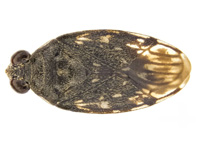Abstract
We describe two new species, Austrognathia glandifera and Austrognatharia orientis using observations on squeezed, live specimens as well as histological sections and transmission electron microscopy. The protonephridia of Austrognatharia orientis are composed of a terminal cell, a canal cell, and a nephroporus cell. The monociliated terminal cell constitutes the so-called filtration area. The canal cell harbors the lacunar system and the protonephridial duct, which is surrounded by six filamentous rods, which originate external to and in between the microvilli of the terminal cell and stretch along the entire length of the canal cell. The female copulatory organs of the investigated species are very different. Austrognathia glandifera has a bursa and a vagina whereas A. orientis only has a weakly defined bursal tissue and no detectable vagina. The bursa is divided into an anterior and a posterior part; at the anterior end a special area is formed by interdigitations of the cells of the bursal wall. The male copulatory organs in the Conophoralia are uniform, composed of an anterior, glandular portion consisting of a proximal part with medium-grained and a distal part with coarse-grained appearance and a penis that is delineated by a basal lamina and has an ejaculatory duct as well as a gonopore. Parenchymal cells are present and serve to embed the bursa and the male copulatory organ dorsolaterally. Our data on the fine structure of various tissues indicate that the Conophoralia are the “less derived” sister taxon of the Scleroperalia.

